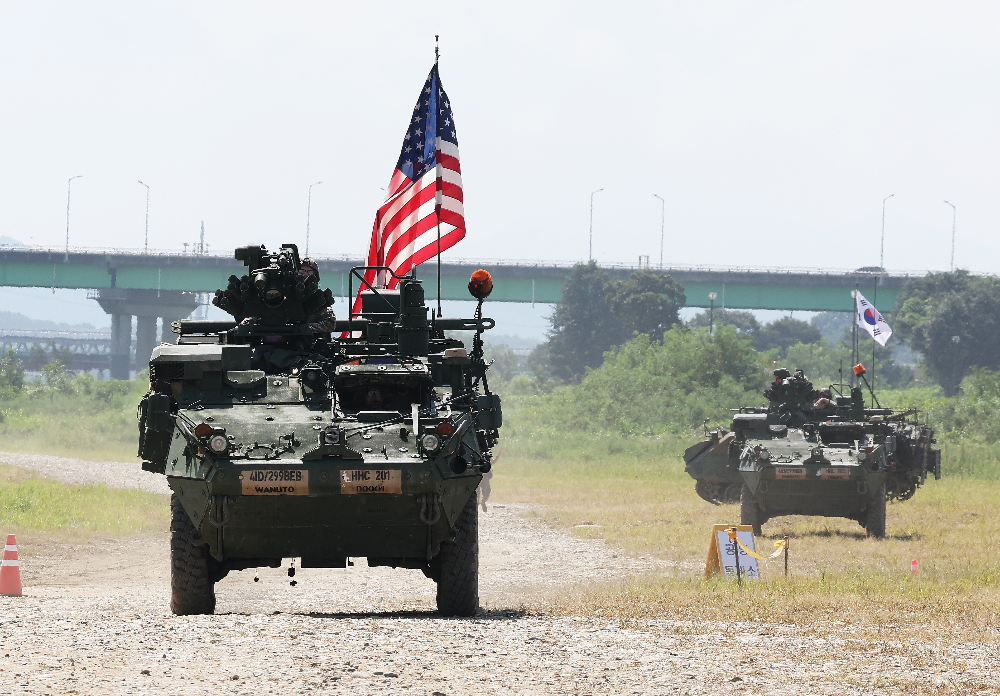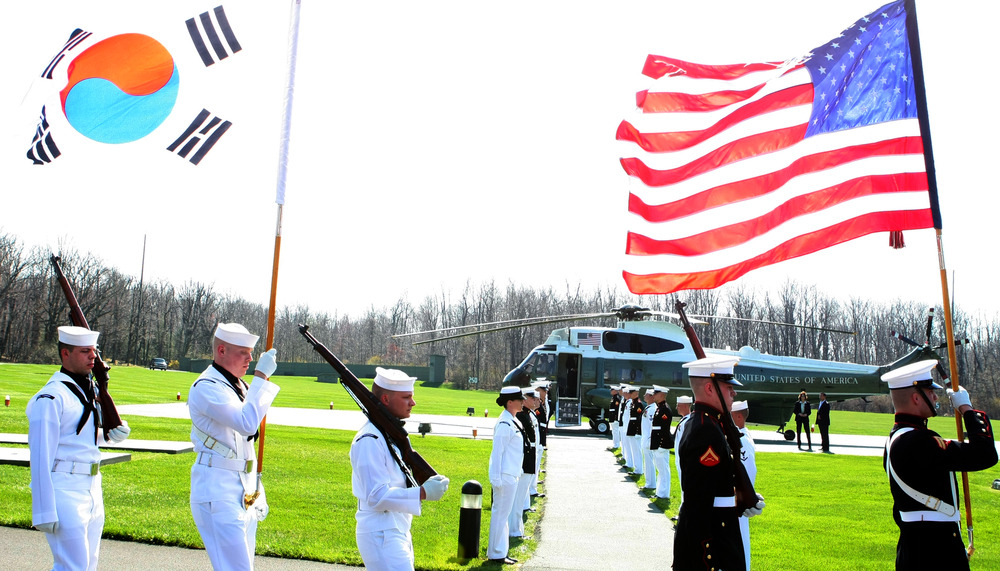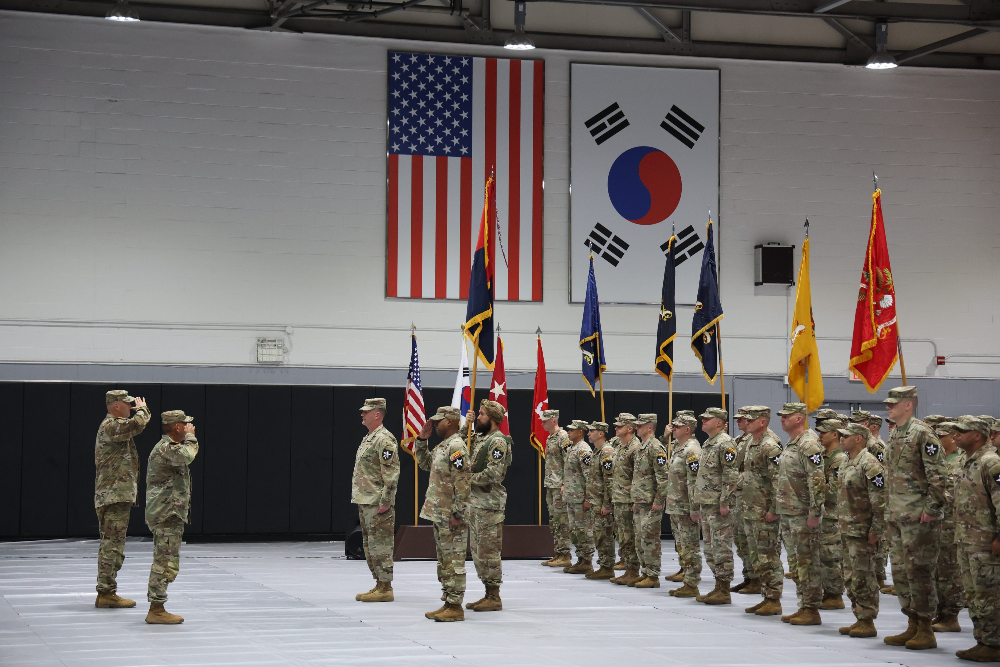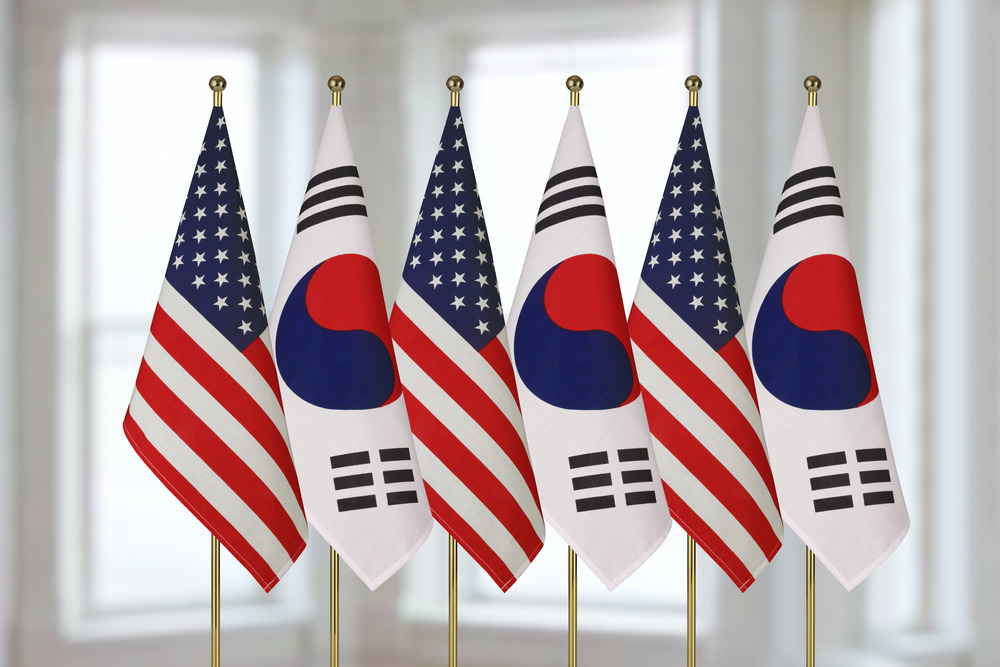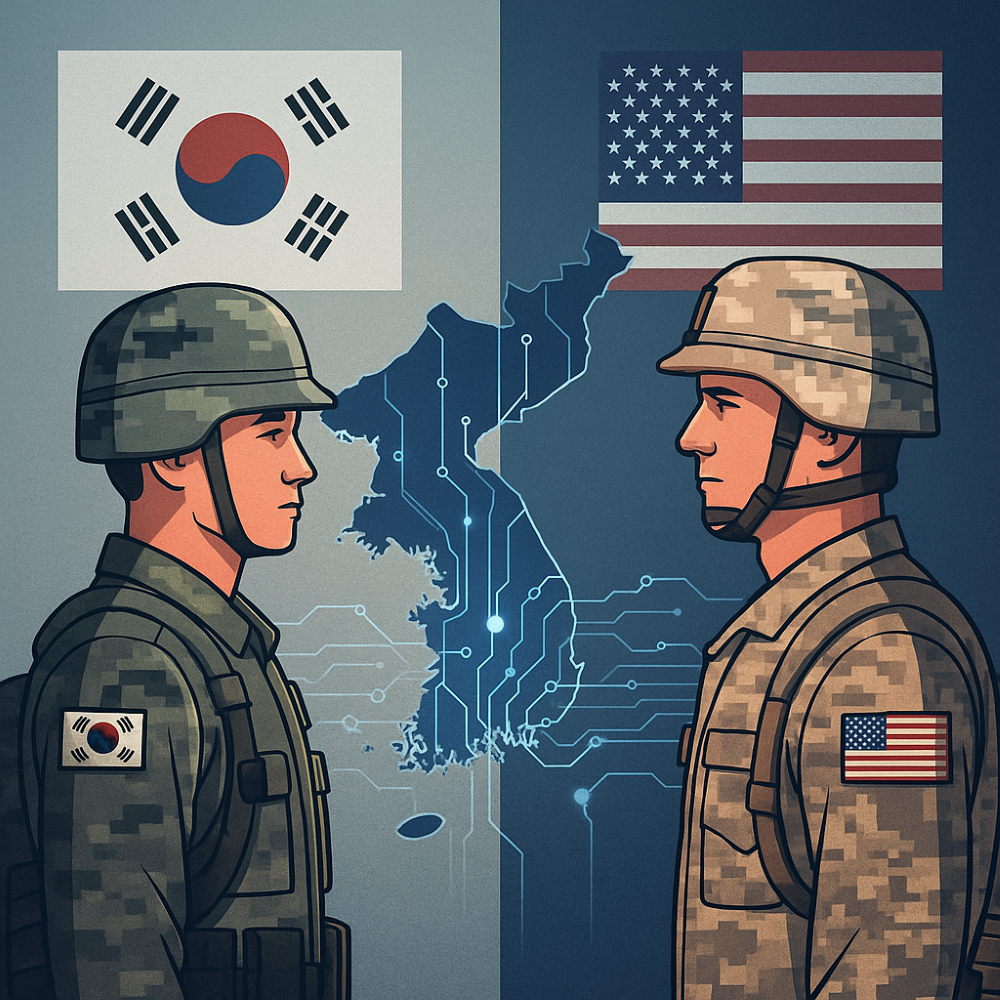
Key Takeaways:
- The U.S.–ROK alliance has been remarkably successful but is now out of step with South Korea’s transformed capabilities
- Modernizing the alliance is needed through the transfer of wartime operational control, easing U.S. restrictions on Seoul’s defense development, and a phased reduction of U.S. forces
- Such changes would create a more balanced, self-reliant partnership, strengthening both countries’ strategic interests while sustaining close cooperation
The mutual defense treaty signed between the United States and South Korea has accomplished its goals. Established in 1954 in the aftermath of the large-scale conflict on the Korean Peninsula, the bilateral alliance was intended to bolster South Korea’s defense capabilities, speed its economic development, and contain the spread of communism by integrating Seoul into what became a vast American empire.
It
has been a stunning success. Peace has prevailed between North and South Korea
for over 70 years, and South Korea has developed into a wealthy, technologically
advanced democracy with a robust military of its own. South Korea has, thus,
transformed.
Its
alliance with the United States, however, remains stuck in the past. This must
change. It is time for Washington and Seoul to modernize their relationship to
better serve both countries’ strategic interests. This will require not just
the long-delayed transfer of wartime operational control to South Korea, but
also American military retrenchment that shifts responsibility for the
country’s defense firmly into Seoul’s hands. These moves ultimately will
strengthen, not weaken, the relationship between the two powers.
Today’s
alliance between the United States and South Korea is much different than when
the two nations finalized their mutual defense agreement decades ago. Over
time, integration and coordination between the allies has increased, including
through the formation of the Combined Forces Command (CFC) in
1978, military
exercises on and around the Peninsula, and defense industrial cooperation. As
South Korea’s own military capabilities improved and some U.S. forces withdrew,
Seoul assumed a larger share of the responsibility for its
security, including taking peacetime operational control of its military forces back from
the United States in 1994 and playing a greater role in planning and preparing
for the country’s self-defense.
Despite
these changes, the alliance continues to institutionalize South Korea’s
military dependence on its American ally. Delays in the transfer of wartime operational control to South Korea, for example, mean
that if a conflict were to start, a U.S. general would lead the alliance’s CFC
and the personnel assigned to it. The United States also continues to place
caps on South Korea’s military capabilities as a condition of the alliance.
Washington has long opposed Seoul’s pursuit of nuclear enrichment and reprocessing
capabilities
(sometimes referred to as nuclear latency) and only in 2021 did the United
States finally lift range and payload
limits on South
Korea’s ballistic missile program. Finally, continued U.S. military presence in
South Korea discourages Seoul from addressing the remaining capability gaps
that it would need to fill to be truly self-sufficient.
The
striking imbalance in the U.S.-South Korea relationship does not work in either
country’s self-interest. For the United States, the sustained commitment to
South Korea is increasingly an unnecessary burden on an already overstretched
U.S. military force. With a clear conventional military advantage compared to its neighbor, South Korea
does not need the United States to win a conventional war against North Korea. Its
equipment is significantly higher quality and its soldiers, though fewer in
number, much better trained. Seoul will need to build up its combat support
capabilities, supplement its munitions stockpiles, and improve its missile defense systems to take full ownership of its
self-defense, but these things are within reach with sustained investment. Moreover,
the risk of a conventional North Korean attack on South Korea seems small. North Korea may pose a hybrid or
nuclear threat, but neither is countered by the current U.S. military footprint
in South Korea.
At
the same time, keeping U.S. troops in South Korea limits U.S. strategic flexibility
rather than augmenting it. U.S. forces based in South Korea will be of little
use in a regional contingency involving China, for example. It is not clear
that South Korea would allow U.S. naval and air forces to
conduct offensive operations against China from its territory and Army soldiers
(which make up the bulk of the U.S. presence on the Peninsula) will have little
role to play in what would be largely an air and maritime war.
South
Korea would also be better off if it were less dependent on the United States. Europe’s
current predicament should warn all U.S. allies about the dangers of continued reliance
on a United States that is rightly reassessing its global interests and
commitments. Without sufficient military capabilities to defend its territory on its own, Europe has found
itself unable to influence decisions that affect its own security. South
Korea’s experience in trade negotiations offers another data point. Still
reliant on the United States for security, Seoul has been forced to consider a less favorable deal than it might have been able to
push for otherwise.
For
the U.S.-South Korea alliance relationship to survive, a new paradigm is needed,
one based on South Korea’s defense self-reliance and autonomy.
The
shift to this new paradigm should be cooperative and phased. The first step
should be the transfer of wartime operational control to South Korea. When the latest planned
date for this transfer in 2015 was cancelled, the two parties shifted to a
conditions-based timeline, tied to South Korea’s capabilities and North Korea’s
nuclear development and missile threats. North Korea now possesses a robust
nuclear weapon arsenal, but there is no reason this should prevent South Korea
from leading the CFC in wartime. Even with South Korea taking the lead, U.S.
commanders could still play a major role in wartime operational planning and
decision-making on conventional military and nuclear issues.
Once
this transfer is complete, the alliance partners should review and revise
operational plans for protection of South Korea’s territory in peace and
wartime. Updated plans should assign South Korean forces full responsibility
for peacetime security and all major combat and combat support roles in
wartime. The United States might continue to contribute logistical or intelligence
functions as well as providing military assistance during a contingency on the
Korean Peninsula.
The
United States and South Korea should also address the issue of South Korea’s
nuclear capabilities. Seoul has long had fears about the credibility of the U.S. nuclear umbrella and a
reduced role for U.S. conventional forces in South Korea would further weaken
their confidence in U.S. extended deterrence. The Biden administration’s Washington Declaration was intended to allay these concerns
but is likely insufficient in today’s context. Currently, the main barrier to
South Korea’s nuclear latency is the United States and the 123 agreement that is included as a condition of
the alliance. Washington should relax these restrictions, allowing South Korea
to develop its own reprocessing and enrichment capabilities—a move with high public support in South Korea. South Korea is a responsible
actor and the risk from such a move would be minor. It would also offer both
sides new policy options and leave South Korea more confident in its own
defense.
Finally,
the United States should set a five-year timeline for its military
retrenchment from
the Korean Peninsula, starting with ground combat brigades and their support
forces and then most air assets and strategic enablers. Forces left behind
would be small in number, including some logistics personnel, some fighter
aircraft, and limited air defense assets. The reduction of U.S. forces on the
Peninsula could occur alongside discussions about the scope of U.S.-backed
security guarantees.
Even
with a narrower formal commitment, the United States and South Korea could
remain close strategic partners. But their bilateral engagement would be driven
by mutual interests, rather than the conditions of a decades-old treaty. There
would be other advantages to the new arrangement. The United States would
benefit from having a stronger South Korean ally with a strong defense
industrial base. It would also be able to reallocate resources currently
dedicated to South Korea to other higher priorities. For its part, South Korea
would have full control over its own defense policy, military spending, and
capability development. And it would have the ability to engage with the United
States on more equal terms, without the shadow of its military dependency
looming in the background.
To
be sure, implementing these changes may be difficult and will take time. But
the changes are both required and wise, and there’s no better time than now—a
moment of peace in Asia—to get started.
Dr. Jennifer Kavanagh is a senior fellow and director of military analysis at Defense Priorities. Her research focuses on U.S. military strategy and force structure, the defense industrial base, and U.S. military interventions. Previously, Dr. Kavanagh was a senior fellow at the Carnegie Endowment for International Peace and a senior political scientist at the RAND Corporation. She is also an adjunct professor at Georgetown University. She received her BA at Harvard University and PhD in political science at University of Michigan.
